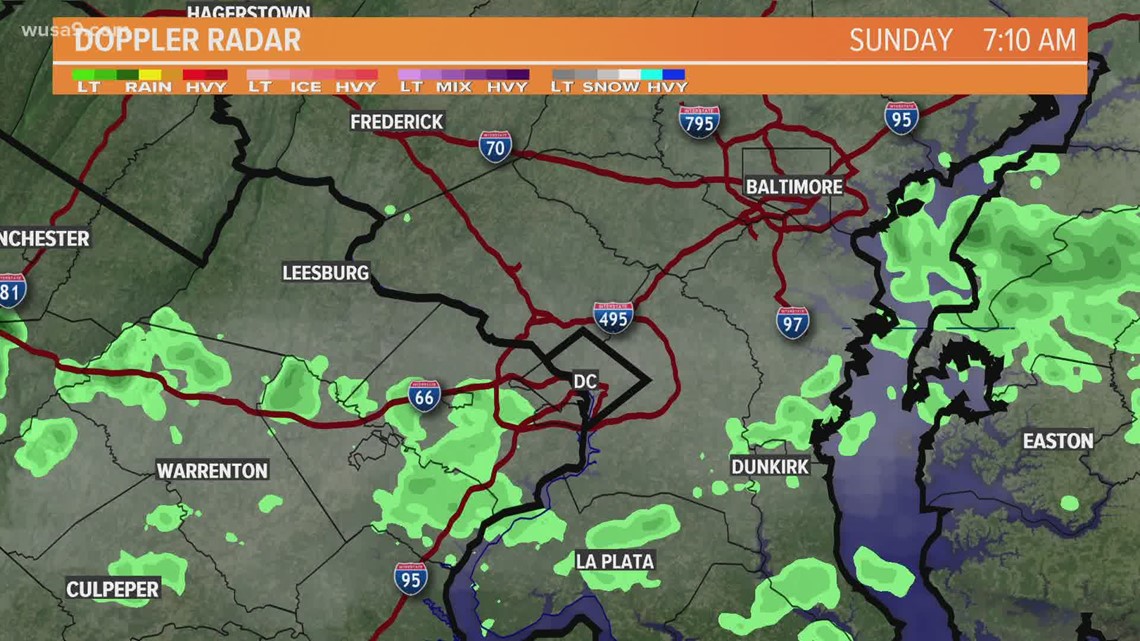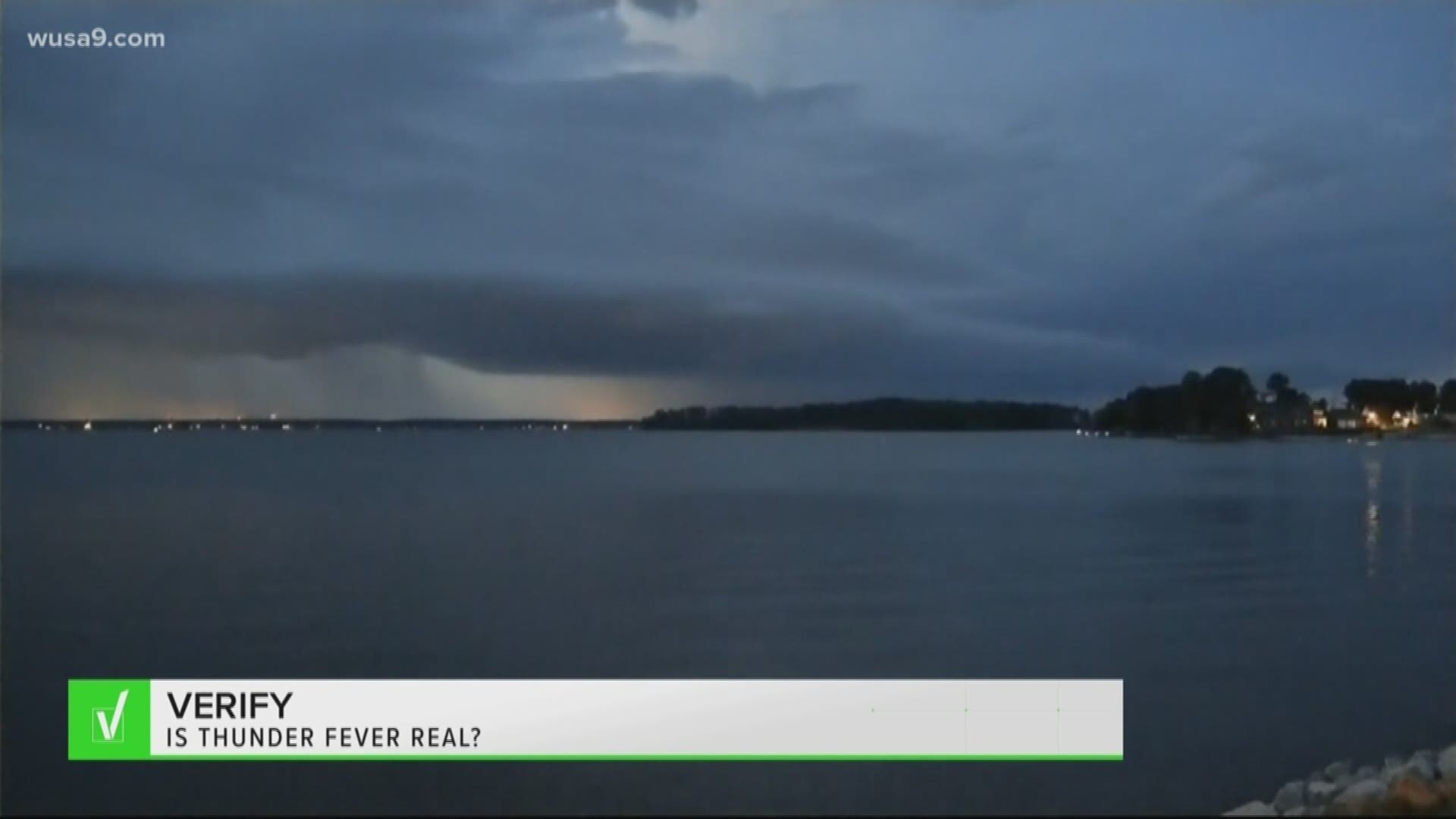WASHINGTON — Thunderstorms are not always a welcome forecast for some asthma and allergy sufferers. While rain may washout some pollen, research shows that thunderstorms may temporarily make asthma and allergy symptoms worse.
Thunderstorm-triggered asthma – or TA – is an asthma attack followed by a thunderstorm. It is also referred to as thunder fever. People who are most vulnerable to the attacks include those with asthma, people with allergies, especially to grass.
Grass pollen is often the most common allergen in these events, but other allergens may contribute. Symptoms come on suddenly and include breathlessness, coughing and wheezing.
A study conducted by Emory University and the University of Georgia analyzed asthma emergency room visits and thunderstorms. The study was based out of Atlanta.
Scientists looked at more than 215,000 asthma visits over several years. They found that more than 24,000 of the visits happened on days following thunderstorms.
Overall, the authors found a three percent spike in asthma emergency room visits following thunderstorms. Scientists said that while thunderstorm asthma epidemics are rare, they are likely underreported.


Thunderstorms and Pollen - Not a Good Mix
To understand how this works, let's first explore the simple anatomy of a thunderstorm. A thunderstorm consists of an updraft and a downdraft. An updraft is rising air (think of it as an atmospheric vacuum sucking up air.)
A downdraft represents air flowing down out of a storm, (think of it as an atmospheric blow dryer pushing out air).
One theory is that the thunderstorm updraft picks up larger pollen particles. Those particles, which are usually too large to inhale, are exposed to moisture which breaks them up into much smaller pieces.
The thunderstorm downdraft then finishes the job by dispersing the smaller particles as winds flow out of the storm. The smaller size particles are easier to inhale and can possibly get into the lungs.
University of Georgia researchers, Andrew Grundstein, Marshall Shepherd, and Paul Miller believe that the key is the strength of the winds pushing out of the storm.
In a study analyzing a deadly thunderstorm asthma epidemic they wrote:
"A distinct characteristic of the event was the very strong downdraft winds that led to a gust front and the spreading of pollen fragments across the region".
These gust fronts disperse the pollen out ahead of a storm.
Other factors contributing to TA include a rapid temperature drop and lightning may also play a role.
Rain Burns The Candle At Both Ends
Light, steady rain can wash the pollen away, but heavy rain is not helpful for allergens such as grass, weed, mold and dust.
On the Asthma and Allergy Foundation website, health experts wrote:
"When it rains when grass and weed pollen is high, drops can hit the ground and break up clumps of pollen into smaller particles. They then quickly disperse, causing a sudden increase in allergy and allergic asthma symptoms during the rain shower. This tends to happen more during sudden, heavy downpours."
Deadly Thunderstorm Asthma Epidemic
Thunderstorm asthma has been noted since the 1980s. The most catastrophic thunderstorm asthma event happened in Australia in 2016. Researchers estimated that up to 10 people died after thunderstorms moved across the area and dispersed pollen. More than 3,400 people flocked to emergency rooms and called ambulances after suffering breathing issues following the storms.
The set up for this event involved a hot day where temperatures approached 95 degrees. A gust front, the leading edge of rain-cooled air that pushes out ahead of a storm, moved in and dropped temperatures. At the same time, the ryegrass pollen was extremely high.
The epidemic impacted several areas including Melbourne and surrounding towns. Hospitals quickly became overwhelmed.
Since then, Australian officials have instituted a thunderstorm asthma event forecast to give residents a three day heads up on storms that could possibly cause an epidemic.
A Growing Problem
Scientists believe that more of these epidemics will be possible, especially as the climate warms.
In a 2019 analysis, Thunderstorm Triggered Asthma: What We Know So Far, the authors wrote about how the weather will continue to play a role.
"Prior to the Melbourne 2016 event, deaths from TA were rare. However, TA events are predicted to increase in frequency and severity. In the scientific literature, a description of epidemics of TA in various geographical areas of the world and climate change scenarios indicates there will be an increase in extremes of weather and intensity of heavy rainfall episodes, including thunderstorms, across the world. It is thus prudent to examine the contributing factors in at-risk regions specifically to identify important or interacting variables that may affect or lead to the prevention of such events in the future."

